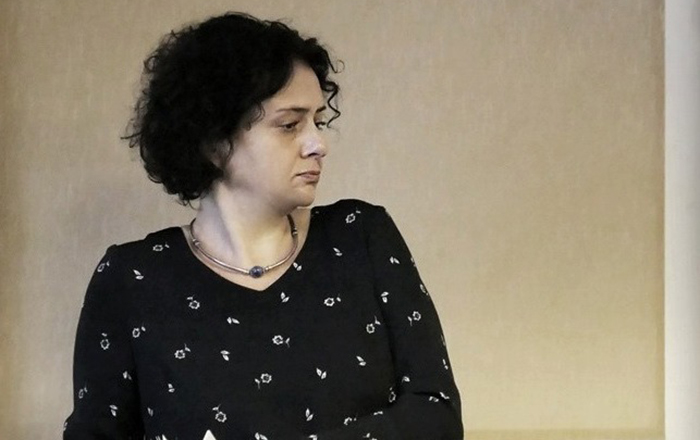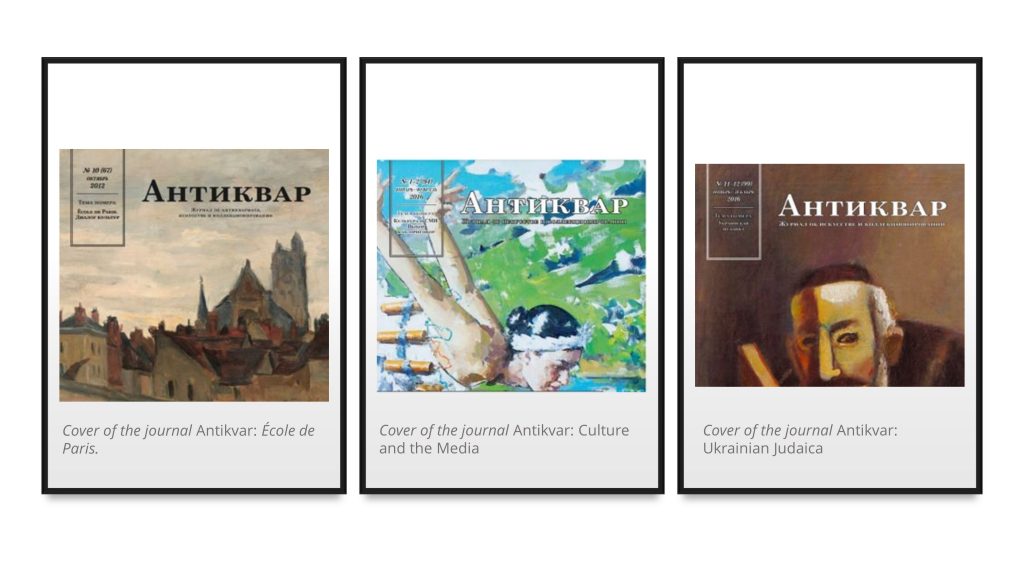A significant proportion of Jewish artists are of Ukrainian descent: Anna Sherman
There is no European culture that did not experience the vital and essential influence of Jewish figures, says Anna Sherman, editor in chief of the journal Antikvar.
Vasyl Shandro: To what degree are interethnic relations an outdated question today?
Anna Sherman: I would put it this way. It is not so much outdated as anachronistic. It is outside the bounds of time in the good and the bad sense. Multiculturalism is natural, organic, widespread. In fact, monocultural niches no longer exist. Even some art trends or culturological zones devoted to ethnic questions are still multicultural. We are living in the twenty-first century, and this obliges us to understand the naturalness of such a situation. One cannot oppose or promote it. It can only be perceived the way it is.
Vasyl Shandro: The history of Jewish art is somewhat separate from the history of art than the history of French or Ukrainian art, for example.
Anna Sherman: We can talk about Jewish art in various contexts. There are religious things; there is the influence of activists of Jewish background on world art. Here it must be noted that there is no European culture that did not experience the vital and essential influence of Jewish figures. That same École de Paris, the famous French school of the early twentieth century, is composed mostly of artists of Jewish background. The most interesting thing is that a significant proportion of these artists of Jewish background are also of Ukrainian descent. We devoted many materials and even a separate thematic issue to the École de Paris, to a dialogue between cultures. The point here is that a Ukrainian-Jewish cultural dialogue did not always take place in the field of Ukrainian culture or on Ukrainian territory.
Vasyl Shandro: Is the journal Antikvar a specific, niche publication?
Anna Sherman: I believe that the circle of readers interested in our publication is broader than the circle of art collectors or art historians. We are for those who are interested in history, culture, art, antiquity, and traditions. We left the niche in the sense that we stopped concentrating only on events happening in the art market.
We are moving on to more culturological topics. One of our themed issues was Culture and the Media [Antikvar, no. 94 (January–February 2016)]. There have been issues devoted to Ukrainian Judaica.
The issue People of the Book: Texts and Images [Antikvar, nos. 7–8 (45–46) (July–August 2010)] appeared a few years ago. This issue is devoted to the bookish tradition in Jewish culture. Jews are called “people of the book,” and this book is the Bible. We used this term more broadly; that’s why it contains materials devoted to ritual objects and the history of Judaism, Yiddish history, the history of European Jews, and contemporary book publishing.
This subject matter allows our issues to avoid becoming outdated. In other words, it is, in fact, a collector’s edition. These topics may be reflected with the aid of a narrative about certain art trends, about certain historical periods connected with one culture or another.
Our positioning as a journal focused on art and collecting does not deny us the opportunity to reflect on current topics. On the contrary, it makes this reflection more thorough.
Today, we have one event happening in Kyiv. The Museum of the Ukrainian Diaspora is holding an exhibition presenting the creativity of Ukrainian artists of Jewish descent, some of whom live outside the borders of Ukraine. This theme, in fact, unites and presents Ukrainian culture.
Vasyl Shandro: Can the articles featured in Antikvar be read online?
Anna Sherman: Today, most of the materials are accessible online on our website. Some materials have no paywall. You can view the covers and table of contents of the journal issues on the website. Practically any issue can be ordered in paper form, so they are available.
This program is created with the support of Ukrainian Jewish Encounter (UJE), a Canadian charitable non-profit organization.
Originally appeared in Ukrainian (Hromadske Radio podcast) here.
Translated from the Ukrainian by Marta D. Olynyk.
Edited by Peter Bejger.
NOTE: UJE does not necessarily endorse opinions expressed in articles and other materials published on its website and social media pages. Such materials are posted to promote discussion related to Ukrainian-Jewish interactions and relations. The website and social media pages will be places of information that reflect varied viewpoints.





















